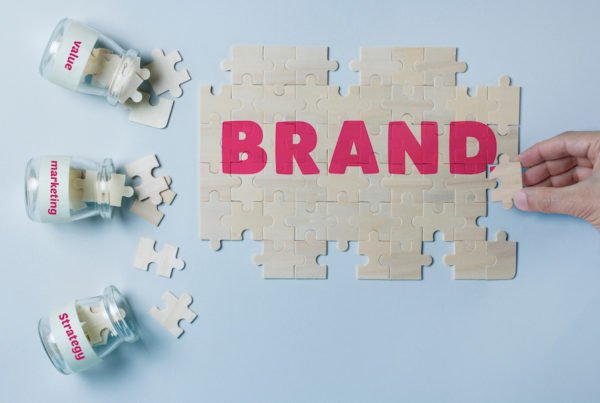
Five Steps to Building a Brand for Your SME

When it comes to owning a small business, one of the easiest mistakes to make is neglecting your brand. Many small business owners take it for granted, believing branding to be something that’s best left to the likes of Coca Cola, Starbucks, Amazon and Google. But they’re wrong. Clear branding is essential if you want to add value to your business and encourage customer loyalty. And it’s not just about your logo. Your brand is the first thing that someone thinks of when they hear the name of your company. It’s your core values, colours easily identifiable to the consumer, logo, your packaging, your specialty, your voice and personality on social media, even the person who answers the phone at your office.
Of course, branding when you’ve just started out has its limitations. You won’t have the budget of a large-scale business yet, to implement your campaign. And as such, you’ll need to think more creatively about the strategies you employ, to make sure you make the best use of your resources and target audiences as effectively as possible.
Knowing which areas to focus on and keeping a tight rein on spending can be difficult. But if you follow these simple steps, there’s no reason you shouldn’t be able to stand out from the crowd and take your business to the next level.

1) Define your values
Branding is often misunderstood. When asked, many business owners think it’s all about logos and taglines, forgetting that the most important aspects of a brand are the things that actually shape your business. Things like core principles and mission statements will help you get a better picture of your business and make it easier to agree on finer details like tone and visual assets.
2) Determine your target market and USP
This may come as no surprise, but knowing who you want to target is essential if you don’t want to waste time and money reaching the wrong people. Think about the type of customer you want to reach, their interests and aspirations, and outline your main customer profile before you get started. This will help you understand why customers are more likely to choose you over a competitor and help you create a brand identity that’s more attractive to potential customers.
Next is the USP, or Unique Selling Point. This is what sets you apart from your competitors and helps you stand out. Your points of difference can be anything from price and quality to ethics and user experience. Just make sure you’re certain about what it is and can build it directly into every facet of your brand identity.
3) Visual assets
Now you’ve considered what your brand is, your values and the customers you’re targeting, you can start creating your brand’s visual assets. These are vital to your brand and don’t just cover your logo. Visual assets include everything that helps a customer recognise your brand, from logos and fonts to colour palettes and style.
A brand style guide is a brilliant place to start. Here you can cover the tone and style of any literature your company produces, how you want your visual assets to be used and create a consistent brand image that runs throughout your marketing.
If you’re not particularly creative or don’t have the income to get your packaging professionally printed, there are affordable ways to get your logo made and brand all the necessary resources. You can use websites like fiverr to connect with hundreds of freelance graphic designers (all available for just five dollars) and buy customisable stamp kits online that are great for branding bags, boxes, business cards and more.
4) Focus on your website
Nearly 2 billion people buy products and services online. That means your website is an important asset and will make a significant contribution to your bottom line if it’s done well.
The first thing to consider is making sure your website reflects your brand. This is because customers who comes across your business offline will need to recognise your brand straight away if they’re to make a purchase. After all, customers have to share sensitive data in order to make a transaction.
Second, make sure your website is searchable. For small businesses this often means avoiding expensive routes like PPC and SEO and instead focussing on creating content that builds your brand and engages audiences. Consider the sorts of questions your customers are likely to enter into a search engine. By developing a strong brand voice and content that answers these queries, you’re more likely to drive traffic to your website while improving trust in your brand.
5) Partnerships
One of the hardest things for growing businesses or startups to encourage is trust. Many young businesses haven’t been around long enough to have the sort of brand recognition or loyal customer base that longstanding businesses have. And yet, there are ways for SMEs to do it.
One of the simplest strategies is introducing customers to your brand through one they already know, like being introduced to someone through a friend. By introducing new customers to your company through a brand they already trust, they’re much more likely to extend that trust to you and make a purchase.
The best way to use this strategy is to find a non-competitive business with a similar audience to yours—emphasis on non-competitive. This will help you reach the right people without ceding customers to your competition.















































